Book Review: Laozi’s Dao De Jing (Ken Liu)
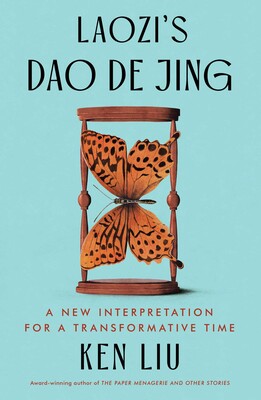
Translation is difficult, because each language encompasses at least one culture’s unique way of looking at the world. That’s hard enough when different words carry divergent assumptions from one language to another, and enormously more difficult when a word, as such, doesn’t even exist in the translated-to tongue. (And speaking of tongues, sometimes the same sounds aren’t even shared between languages, and some people can’t distinguish between sounds that change meanings completely!) Some words carry heavy cultural baggage, representing complex concepts in themselves. Obviously, Dao (which is often translated as “The Way” but which Ken Liu mainly leaves as just “Dao” so that readers are reminded of its multifaceted weight), De (often translated as virtue, or power, action, etc.), and Jing (often translated as book, or canon, treatise, etc.) are three such words. And when each sentence orchestrates interactions between complex concepts, conveying an entire treatise of philosophy and religion between cultures that share very little history and focus on different values might seem almost insurmountable. However, Ken Liu is far from the first person to attempt to translate Laozi’s Dao De Jing. The text, written in China during what Westerners label as the 4th century BCE, was first translated into English in 1868 by a Scottish missionary, and Wikipedia says it has been translated into Western languages more than 250 times. Indeed, I seem to remember a copy of Lao Tsu’s Tao Te Ching (different Romanized versions of the same Chinese words) floating around my college dorm, and I probably leafed through it then, although I can’t say I retained any of it. So, why is Simon and Schuster publishing a new version, Laozi’s Dao De Jing: A New Interpretation for a Transformative Time, by Laozi and Ken Liu, tomorrow (Aug. 20)? Publishers have their reasons; the more pertinent question to me is why anyone should read this in preference over any other versions. Liu himself would probably say that people should also read other versions in addition to his, as he himself is in conversation with interpretations across the centuries. (Although it’s not quite a conversation, because according to Liu’s interpretation of Laozi, the words of long-dead writers are merely the tracks of their thoughts, not the thoughts themselves.) For me, my primary reason for reading Laozi’s Dao De Jing: A New Interpretation for a Transformative Time was just that I wanted to see what Ken Liu had to say. I first became aware of Liu via a 2011 Podcastle audio “reprint” version of his deeply moving short story, “The Paper Menagerie,” and read his Paper Menagerie collection of stories later. He also wrote the Dandelion Dynasty silkpunk epic fantasy series. (He’s been a lawyer and a programmer, too.) Perhaps most relevantly here, works that he has translated into English, including “Folding Beijing” by Hao Jingfang, which I loved, and The Three-Body Problem by Liu Cixin, which I respected, have won major awards. I was fully confident that a Ken Liu translation would be both elegant and accessible, or as accessible as a translated foundational philosophical literary text could hope to be. Reinterpretations of older works have actually been pretty popular in science fiction circles in recent years; for instance, Zach Weinersmith’s and Boulet’s Bea Wolf was a 2024 Hugo finalist for Best Graphic Novel, just a few years after Maria Dahvana Headley’s Beowulf: A New Translation took the Internet by storm. However, despite being reviewed here at Skiffy and Fanty, mainly for the sake of its translator, Laozi’s Dao De Jing is not a work of speculative fiction. It’s a collection of many short chapters composed of short paragraphs advising how to think about oneself, the world, and how one should *be* in the world and interact with it (including other people) — or NOT interact, interspersed with sections where Liu explains his translation process and the choices he made. These interstitial sections start out quite long, involved, and frequent, and gradually become shorter, sparser, and rarer, as Liu becomes more comfortable with what he’s doing, and trusts that the readers will also acclimate themselves to the work and how he has been approaching it. In addition to translating individual words, Liu had to decide how the book actually began; and even before that, which version of “the book” to follow: the traditional “received text” or the text from scrolls discovered in the 1970s, which starts in the middle of the traditional text and puts the beginning half at the end, or the fragmentary text from bamboo slips found in a tomb in the 1990s. Liu wrote about applying his own knowledge of the constantly shifting writing/editing/publishing process in deciding how much weight to give each version, especially given Laozi’s own emphasis on true understanding and wisdom over the language that tries to encapsulate them. Because my review copy forbids quoting until verified with the finished book, I can’t share Liu’s translations or his own words. But I can tell you that it’s pleasantly fascinating to read both the translated text and Liu’s musings on their meanings, to wrestle with the writings and wonder how many of them, or how much of the whole, may be applicable to one’s own life. Many of the chapters contain apparent self-contradictions, or at least concepts that I find myself resisting, such as not valuing the rare and talented, or admonitions against taking actions (and I like the idea of leading by the example of non-conflict, but as a trained wordsmith, I find it hard to eschew arguments); however, I’m aware that this resistance may be because I don’t sufficiently understand these Daoist ideas yet. Liu himself says that when he started actually reading the book himself during the pandemic, instead of relying on quotes and cultural memories, he wanted to argue with it, and only later started to really accept it enough to converse with it. The book is pretty short if one simply measures by its 176 pages, but I strongly advise against rushing through it. So does
Book Review: CRAFT: STORIES I WROTE FOR THE DEVIL by Ananda Lima
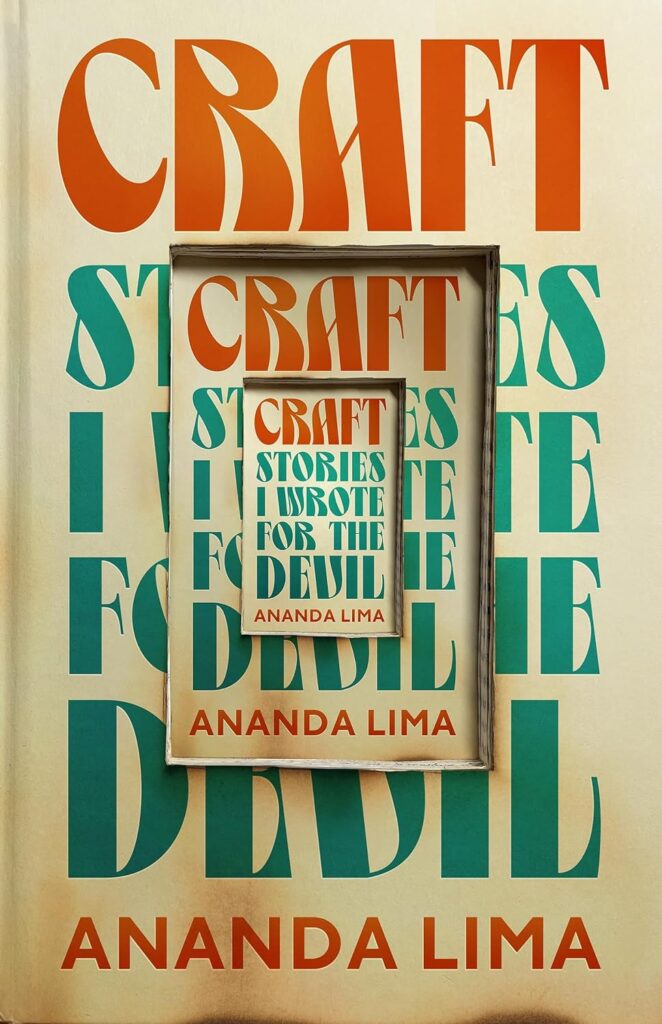
At the dawn of the Millennium, a writer attends a Halloween party and meets the Devil. She’s come dressed as a distinct reference to the past: Inauguration Nancy Reagan. He’s dressed in a baggy suit with a rumpled orange wig. When she asks the Devil what he’s supposed to be, he simply answers: The future. Cue terrifying shiver in readers. So begins Craft, and so starts a series of encounters between the writer and the Devil. While those future meetings will be neither as prolonged nor as intimate as this first, the effects of each experience will profoundly influence the progression of the writer’s art: her craft. The magic of Lima’s debut work is its effective amalgamation of form, genre, and theme. Craft is most recognizable as a collection of short stories with interludes of the meetings between the writer and the Devil through time. But readers will quickly find the numbered stories blending into one another, and the unnumbered interludes blending into the stories, to the point where Craft manifests characteristics more particular to a novel, united with a third-person omniscient perspective that may not be as fragmented as a collection would normally have. Craft is also most recognizable as literary fiction, with an emphasis on words, writing, and ideas that dominate plot or character. Yet it also conjures the realms of genre, and is published by Tor Nightfire, a horror imprint. The stories, or episodes, of Lima’s debut are reminiscent of the surreal fiction and magical realism that previous generations of Central and South American authors have pioneered. A Brazilian expat settled in the United States, Lima offers a unique and personalized perspective in Craft that addresses the immigrant experience, with inspiration from the difficult years since the US election of 2016, through the SARS-CoV-2 pandemic, up to the present. At points, Lima compares and contrasts elements of the political administration of her current home, to the that of her homeland where family still lives. I describe this as if the writer who appears in Craft is an autofiction stand-in for Lima herself. Possibly. Possibly not. Here again, Lima’s work exists as a blending with uncertain definition between fiction and memoir. Are these biographical details of truth that Lima has put into Craft from her experiences? Are they a broader truth, related with completely fabricated details? Lima writing a writer character who writes stories inspired by events and encounters with the charismatic enigma of the Devil makes a large portion of Craft meta, with frequently amusing commentary on the process of writing – particularly the vagaries of peer review. “Idle Hands”, one of the ‘stories’ in Craft, consists entirely of notes, or reports, written by members of a writer’s group as critique of a short story the writer has produced in the workshop. All the perspectives combine into a contradictory and impossible-to-address mess of opinions and points of view, creating an ambiguous idea of what the actual story may have been and the realm of possibilities for its strengths or weaknesses. The most surreal entry of Craft (and a brilliant one), “Antropófaga”, features a wearied woman who discovers a vending machine at work that dispenses miniature little American people of various types, in crisp plastic packaging for consumption like candy. Equally brilliant on the other end of the spectrum of realism would be an entry like “Ghost Story”, using magical realism to explore separation of people in ordinary situations. Returning to the topic of Craft‘s publisher, one might wonder how horror enters into the picture here. Indeed, from what I can gather through brief research, Lima herself was surprised that her work could be characterized or marketed as such. Horror fans who are familiar with the very broad spectrum of the genre won’t be surprised here, but casual horror fans or those who normally avoid horror might be more confused through preconceptions or expectations. Craft is not about eliciting constant terror or fright – or about pulling jump scares. It’s not filled with gore or overt violence. It’s a vibe. A disquieting soul that draws from our own collective experiences over the past decade (or even beyond) and the nightmare that may exist in our realities. And it’s about living through them and finding oneself even through the uncertainties and unfairness of it all. Craft also evoked the horror genre for me a bit through its structure, particularly compared to the common format for horror anthology movies. These usually consist of multiple independent stories, with a bridging narrative between each to hold them all together. At times, the worlds of each episode and the interludes meet one another in meta fashion. Craft contains this same effect, with the unnumbered (and untitled) interludes serving as this type of cinematic bridge narrative. Similar to this form in movies, the bridging narrative never quite gels in strength compared to many of the distinct episodes, yet contains fragments of brilliance and serves as that essential glue for the whole. Lima’s Craft is well worth checking out for genre fans that like the literary fiction side of the spectrum (or the reverse.) I’d also recommend looking into other reviews if interested (or still undecided) that go more into specific stories. I often find myself writing reviews that disagree with a lot of other opinions out there, or see different things, but in the case of Craft, most of the coverage seems fair and on-point.
Author Interview: Francesco Dimitri (THE DARK SIDE OF THE SKY)
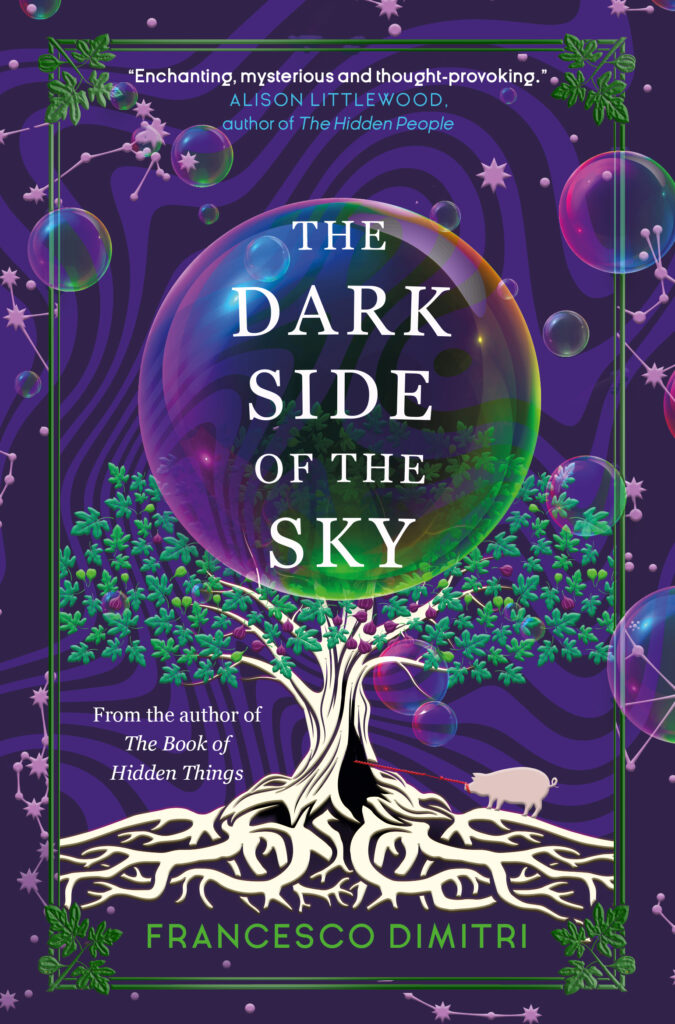
“All good literature is fantasy. The word ‘realism’ – I don’t buy it. Every writer sees reality from their own point of view, and they bend what they see to make it fit into a story.” — Francesco Dmitri
Review: The Spear Cuts Through Water by Simon Jimenez
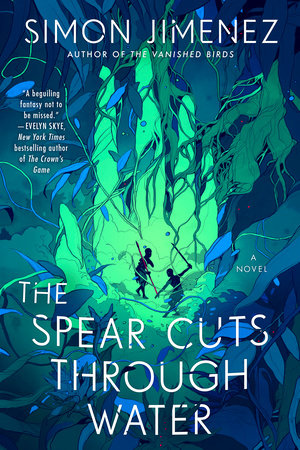
Perspective, point of view and what this story really is are at the heart of the book and what it is trying to accomplish, on top of a strong fantasy story and tale.
Book Review: The Sea Dreams It Is the Sky by John Hornor Jacobs
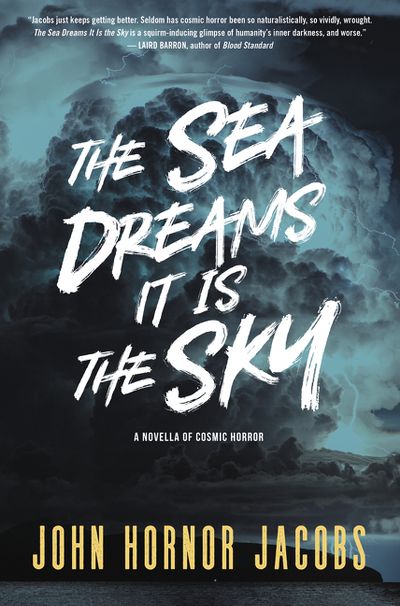
The Sea Dreams It Is the Sky is a dark and intently written horror novella that shows the breadth of the author’s skill. A fictional South American Country. Two expatriates, an old poet with a long history of tangling with the autocratic regime that runs his homeland, and his young protege, a young college professor who is drawn to him, and his connection to their homeland of Magera. An unlikely friendship, a manuscript telling awful secrets, and a compulsion to return to her homeland. These and much more are the elements of The Sea Dreams It Is the Sky, a literary cosmic horror novella from John Hornor Jacobs.
Book Review: THEORY OF BASTARDS by Audrey Schulman
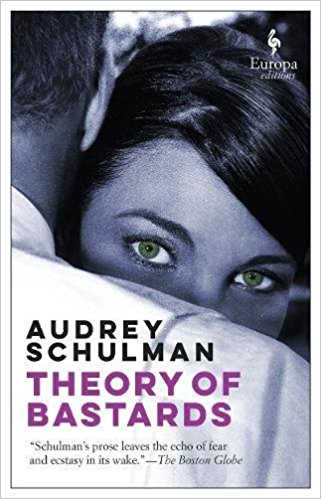
Scientist and MacArthur Award Fellow Francine (Frankie) arrives in the near future at a facility dedicated to the study and protection of the non-human Hominidae, the great apes. Wooed there by the Foundation that runs the facility, Frankie is eager to use its resources and her ‘Genius Grant’ to study a group of bonobos as a means of testing and extending her theories on reproduction, and their influence on the mechanisms of biological evolution. Frankie begins this new chapter in her life while facing familiar personal challenges and physical complications arising from life-long endometriosis. Her intense focus on her work and the benefits provided her through the latest technology of ‘bodyware’ augmentations help Frankie persist through any disability caused by her condition. Meanwhile, another researcher there named Stotts facilitates her education on, and introduction to, the bonobos. The gentle, reserved Stotts focuses his research on the development of tool use in primates, but he looks to the relatively simple tools of communication utilized by the bonobos with a romanticized envy when compared to human technology.

